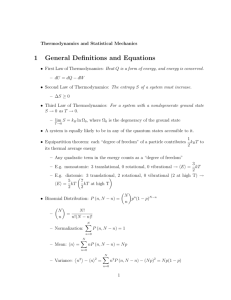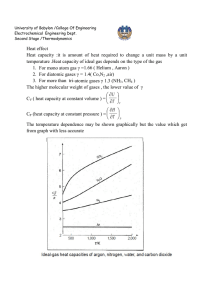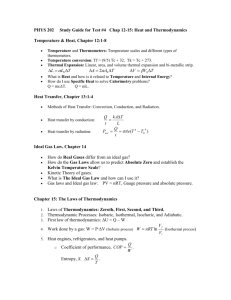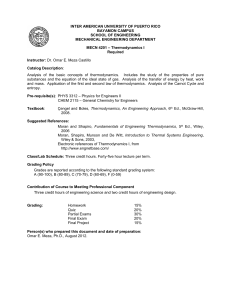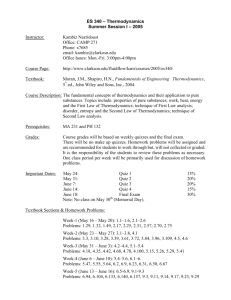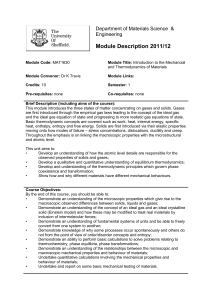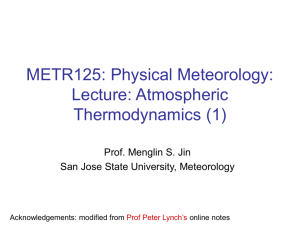Lecture8
advertisement
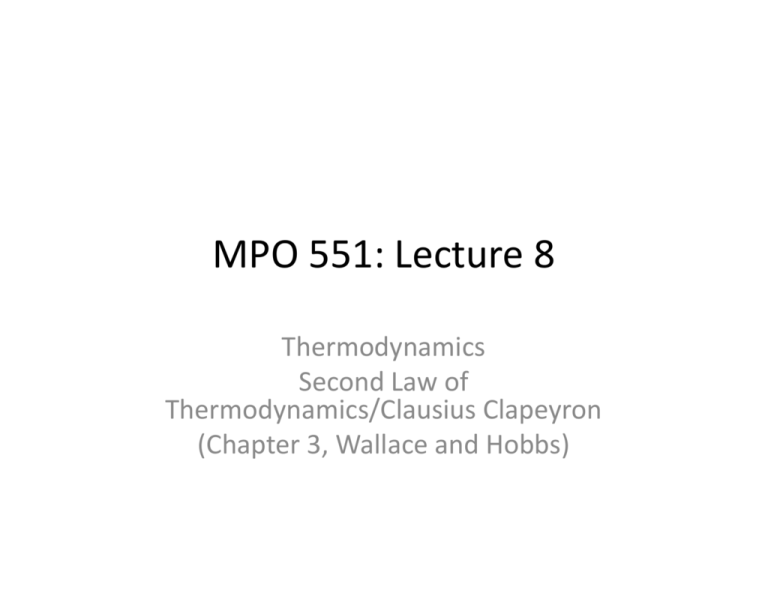
MPO 551: Lecture 8 Thermodynamics Second Law of Thermodynamics/Clausius Clapeyron (Chapter 3, Wallace and Hobbs) Entropy Per unit mass And ds=0 for adibatic processes. Hence adiabats are also isentropes. Note that this only applies to reversible transformations Thermodynamic theory of hurricanes adiabat To=‐75C Isotherm (Heat sink) adiabat Ts=27C Isotherm (Heat source) Theoretical efficiency: Ts To Ts See Emanuel (1991) on our class website. Increasing destructiveness of tropical cyclones over the past 30 years (Emanuel 2005) – paper on our class website But this was just the beginning of an ongoing (and heated debate)….. 1. Equipartition of energy 1 1 U f kT f nRT 2 2 assign 1/2kT of energy to every degree of freedom Degrees of freedom=f(molecule) • For monoatomic molecules f=3, because in a 3-D space they can move to 3 directions • For polyatomic molecules, the molecule can also rotate and vibrate so f can be >3 2. What if f>3? Because CV=f(<U>), then the specific heat at constant volume: CV 1 U 1 1 1 CV f nR CV fR 2 n T V n 2 C C R , CP also changes. And since C So every time the laws of thermodynamics are used, the type of molecule should be defined. P V • In atmospheric/meteorological applications the air is usually considered to be an ideal monoatomic gas. [Atmospheric Science, Wallace & Hobbs, pp.75, (3.3)] 3. How are the molecular velocities connected to the degrees of freedom? Maxwell-Boltzmann distribution Figure from : http://scientificsentence.net/Thermodynamics/ This distribution applies only when we are dealing with ideal monoatomic gases. For real gases the kinetic theory of gases deviates. For more information: http://chemed.chem.wisc.edu/chempaths/GenChem‐ Textbook/Deviations‐from‐the‐Ideal‐Gas‐Law‐590.html http://hyperphysics.phy‐astr.gsu.edu/hbase/hframe.html http://intro.chem.okstate.edu/1314f00/lecture/chapter5/lec101300.ht ml http://www.chembook.co.uk/chap5.htm#gases
